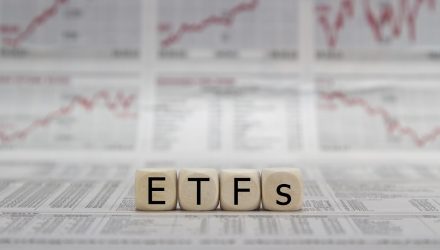Vanguard is one of the most popular names in ETFs for a reason. It offers high-quality funds at a low cost. The firm’s exchange-traded fund chief Rich Powers discussed what Vanguard has been doing with it’s funds recently on CNBC.
“(ETFs) are about 35% of our cash flow for the last three years,” Power said. “We’ve seen more and more investors, financial institutions, advisers, and increasingly individual investors embracing ETFs as a way to build a diversified portfolio.”
One particularly prominent ETF is the Vanguard S&P 500 ETF (VOO). The fund invests in stocks in the S&P 500 Index, where the goal is to closely track the index’s return, which is considered a gauge of overall U.S. stock returns. Another fund which gets a lot of attention is the Vanguard Total International Bond ETF (BNDX), which attempts to track the performance of the Bloomberg Barclays Global Aggregate ex-USD Float Adjusted RIC Capped Index (USD Hedged).
“The most popular ETF in the industry right now is the vanguard S&P 500 ETF (VOO). It’s about $10 billion in cash flows year to date. Also in our total market fund be at the equity side of things or the total bond market. And then interestingly BNDX is a product where more and more investors are involved.”
Powers also mentioned the Vanguard FTSE Developed Markets ETF (VEA), which seeks to track the investment performance of the FTSE Developed All Cap ex US Index. VEA provides a convenient way to match the performance of a diversified group of stocks of large-, mid-, and small-cap companies located in Canada and the major markets of Europe and the Pacific region.
“VEA is very popular. That’s the developed market ETF: International fixed income, investment grade. You know despite the talk around low or no yields for international bonds, you’re seeing more and more interest, less homebuyers amongst investors for fixed income,” Powers said.
Active management ETFs is an area that many investors are not aware that Vanguard is involved in as well. Active ETFs typically have a slighter higher expense ratio, but offer more targeted allocations and flexibility.
“We launched a suite of factor ETFs, six factor ETFs last February. Slower uptake, naturally I think for us. Active requires a track record. We are about 18 months into their life cycle. It’s a different concept. And so there’s lots of education we are doing, in terms of teaching investors just how to invest with factors. It’s not appropriate for all investors. But for some investors that want to have very specific exposures,” Powers added.
Tactical ETF selection is a key component of other ETF companies as well.
“We use a combination of both. So we are active managers of passive ETFs, of rules based ETFs. So we combined the best of both worlds, and I think that’s really the sweet spot,” said John Davi of Astoria Portfolio Advisors.
Many investors mistakenly believe that an ETF investment is always a passive management style. But any investment is still an active decision, as Powers explains.
“Anyone who is buying an ETF is effectively doing active asset management. Unless you’re buying a total world ETF (VT), you’re making a bet on the market, meaning you’re tilting more towards large caps or small caps. And so every investor is doing some form of active management. It just runs the spectrum,” Powers added.
Cost is generally a salient factor for investors when deciding, which fund to purchase. But Powers cautions investors to look at the whole picture, rather than focusing solely on the expense ratio of a fund.
“I think there’s more to it than just expense ratio when you get to these levels. When you’re talking about three basis points versus four basis points, things like tracking error, tax efficiency, bid-ask spread, it matters a lot more Versus, I’m comparing a three basis point fun versus a 30 basis points fund,” Powers explained.
Watch the full CNBC segment here:
For more investing ideas, visit ETFtrends.com.
